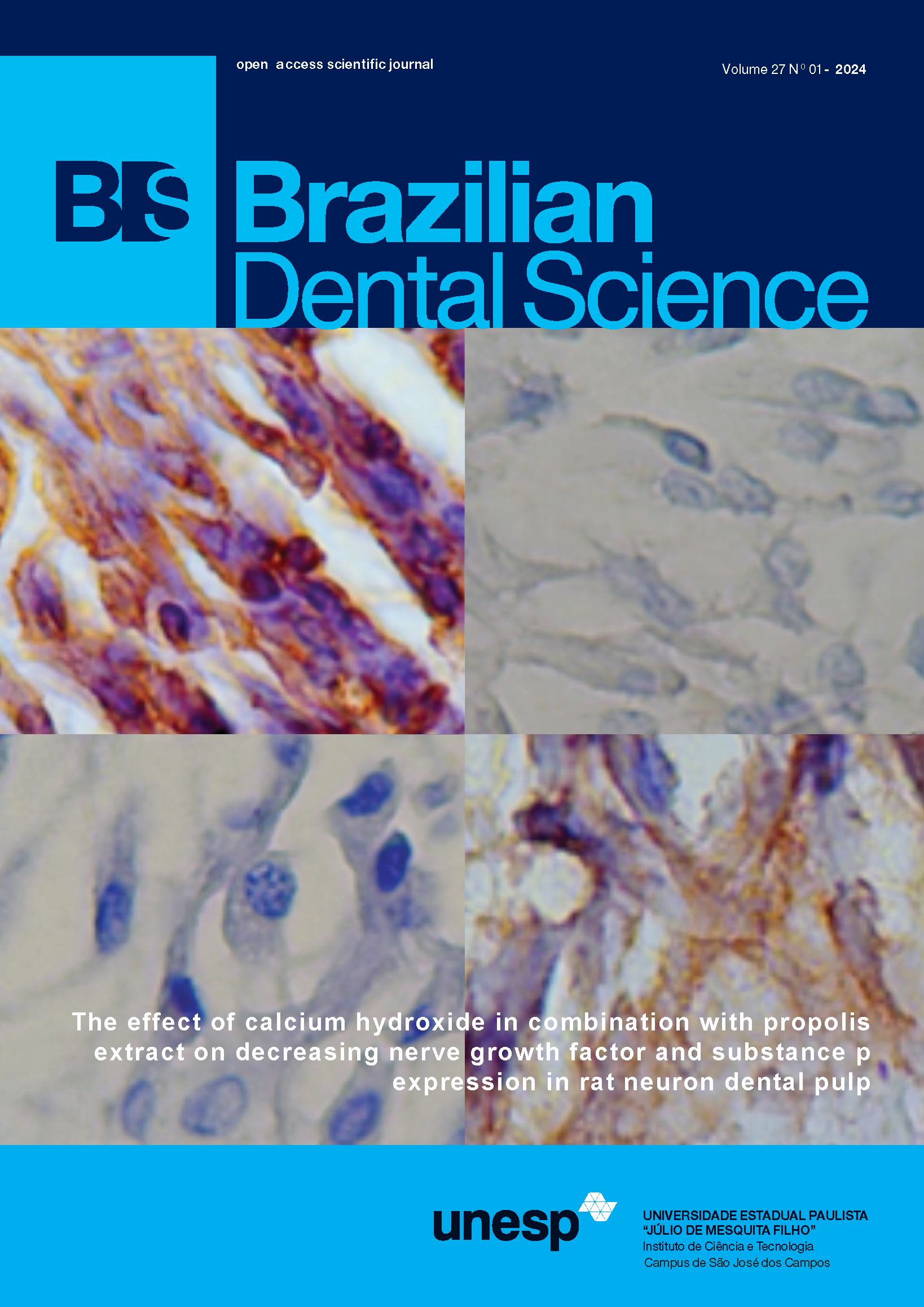Assessment the retentive force and XRD analysis on the recycling esthetic thermoplastic acetal clasps
DOI:
https://doi.org/10.4322/bds.2024.e4005Abstract
Objective: To reduce environmental biohazards, technicians should be educated with safe biological waste disposal
procedures and dental material recycling. The present study assesses the retentive force, deformation test and XRD
analysis of re-injection acetal resin clasps. Material and Methods: specimens were prepared for clasp retention test
injection according to the manufacture’s instruction for acetal resin. The first group represent control group with (100%
New) and other five groups as experimental groups (group II (25% old +75% new), group III (50% old + 50%) new,
and group IV (75% old + 25% new) with different percentages between new acetal materials and old acetal materials,
while two last groups with several times (group V (100% old) and group VI (re-injection two times)) only used old
acetal materials. The X-ray diffraction (XRD) device used to give structural information for the materials to be tested.
The study data were analyzed via One-way ANOVA (LSD) at a significant P-value of (p-<0.05) and a confidence level of
95%. Results: After comparing the results, a significant improvement in the retentive force of acetal clasp specimens after
re-injection two times there was found high mean value in group re-injection two times and lower mean value recorded
in control group. In XRD patterns of there was no diffraction peak refers to crystal structure of acetal resin. Conclusion:
the present study findings concluded that the recycling of acetal resin enhanced the retentive force of acetal clasp and
not affected on the crystal structures of material.
KEYWORDS
Acetal clasp; Esthetic clasp; Recycling; Retentive force; XRD.
Downloads
Published
How to Cite
Issue
Section
License
Brazilian Dental Science uses the Creative Commons (CC-BY 4.0) license, thus preserving the integrity of articles in an open access environment. The journal allows the author to retain publishing rights without restrictions.
=================




























